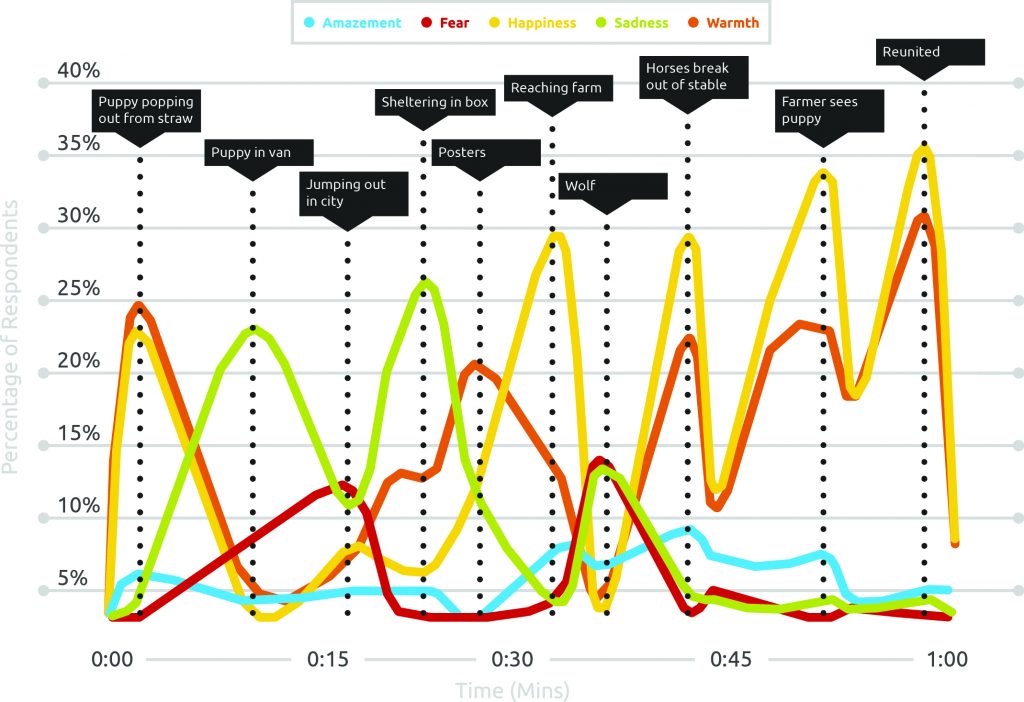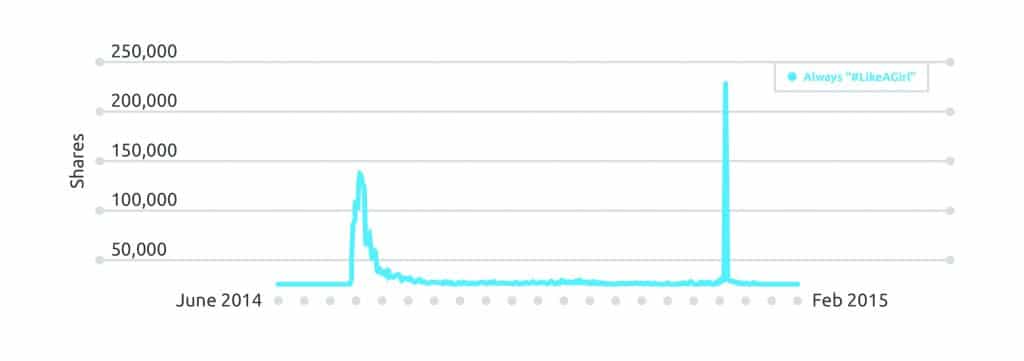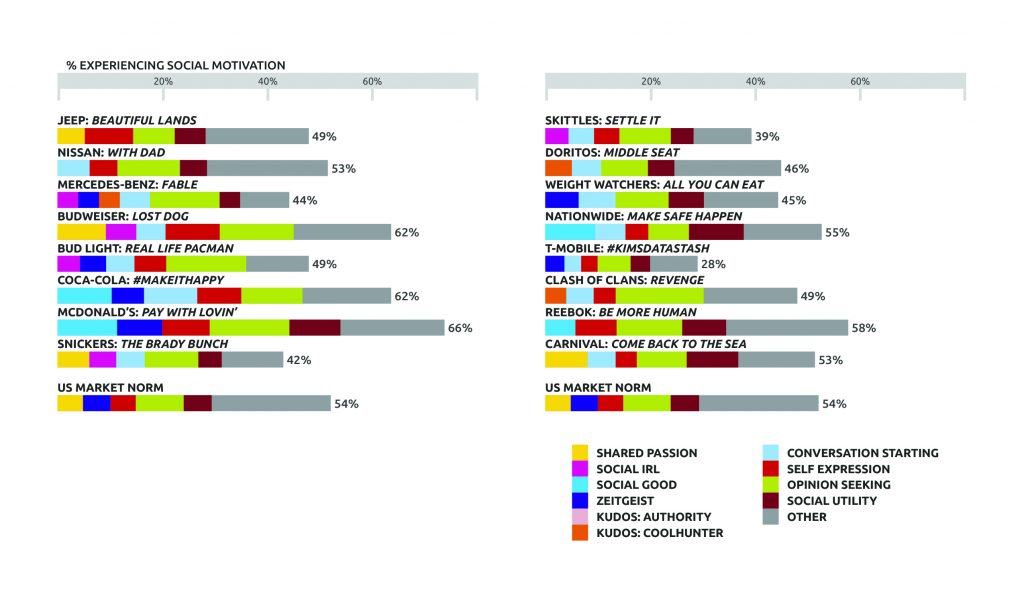5 Tips To Help Create The Perfect Super Bowl Ad
Ah, the Super Bowl. The Big Game. Americans far and wide will be hoping their teams get through the play-offs and make it to the biggest game of the year at Levi’s Stadium on February 7. Marketers, on the other hand, are gearing up for a different type of game.
Nielsen reported last year’s Super Bowl was the most watched TV program in US history, with a staggering 114.4 million viewers tuning in to watch the game. And if that wasn’t enough, CBS will this year be live streaming the whole game online – ads and all – at the same time. At $5 million for just 30 seconds, brands will be hoping to make every second count next month.
But how can brands large and small create ads capable gain of capturing the attention of this massive audience? Well, here are Unruly’s 5 tips on how to make a perfect Super Bowl ad. Download
our Science of Sharing: Super Bowl XLIX Study to find out more.
1. Use unusual emotions to surprise viewers
Unruly data has always showed that evoking intense emotional responses is one of the ways to get videos watched and shared. And for the most part, Super Bowl advertisers got this right in 2015. In fact, 80% of the ads we tested evoked intense emotions.
In 2015, Budweiser won the Super Bowl for the third year in a row. It did this by evoking a variety of different emotions from its viewers. Last year’s ad “Lost Dog” used bursts of fear – a primal response which amplified overall emotional intensity. The psychological timeline below also shows a crescendo of happiness and warmth in the second half of the video, peaking at the reunion scene. So if you’re looking to use emotions to draw a reaction from viewers, consider alternating your content to elicit intense feelings of warmth and happiness with fear and sadness for an emotional rollercoaster that will keep viewers intrigued.

2. Repurpose successful online content
What’s the saying – if it ain’t broke…? Always’ “#LikeAGirl” and Dove Men’s “#RealStrength” were both originally released in June 2014 and had been widely shared online before transferring to TV. The Super Bowl relaunch of “#LikeAGirl” triggered the campaign’s highest ever spike in sharing, with a very strong share rate of 3.6%.
However, the original three-minute version rather than the new 1 minute version attracted the vast majority of shares during the Super Bowl period, which also speaks to the importance of testing your ad before the game to determine the best piece of creative to support with paid distribution.
We’ve already seen one 2016 advertiser taking this approach. Colgate’s Super Bowl ad will be adapted from its original ad that aired in Peru in 2014. The “Save Water” campaign aims to turn the faucet off while brushing your teeth.

3. Don’t waste money on celebrities
Celebrity appearances have long been a staple of Super Bowl advertising. But we have known for a long time that celebrities don’t drive online sharing.
In 2015, we saw a noticeable trend towards celebrities poking fun at themselves. Danny Trejo and Steve Buscemi let hunger get the best of them in a Snickers ad, Aubrey Plaza was a sarcastic ambassador for Newcastle Brown Ale and Kim Kardashian entreated viewers to “save the data” so they would have enough left to admire her selfies. This still only attracted an average share rate of just 1.2%.
If you’re still going to for for the celeb appeal, do so with caution. Clash of Clans’ “Revenge” had an Unruly ShareRank score of 7.6 thanks to the ad’s clever and entertaining execution. However, less than half of viewers were able to remember the brand because Liam Neeson stole the show. Instead of forking over the big bucks for a celebrity appearance, consider utilizing regular Joes doing extraordinary things. You’ll probably be able to tell the same story and won’t get overshadowed by the big name!
4. Include social motivations in the creative brief
Only one of the ads we tested (McDonald’s “Pay With Lovin’”) achieved upper quartile results when it came to this key driver of shareability. Five ads even fell below the market US market norm. There is an opportunity for advertisers to turn their attention to the relatively unexplored area of social motivations, rather than relying on the natural hype surrounding the Super Bowl.
The most popular social motivations in the Super Bowl include Opinion Seeking (elicited by 100% of ads tested) and Conversation Starting (elicited by 81%). Our data has shown that you can’t have enough, though, so layer them on! The more present in your ad, the more likely it will get shared.

5. Tie your campaign to a cause
The average share rate of cause-related ads was 2.4%, well above the Super Bowl average of 1.7%. And for good reason. In addition to emotional responses, social motivations are the other component your video needs to encourage video sharing and social good is one of the 16 social motivations we look for when testing videos.
And there were many memorable examples of cause-based advertising during the 2015 Super Bowl. Coca-Cola inspired people to spread happiness instead of hatred online in “#MakeItHappy,” Always stood up for girls’ confidence in “#LikeAGirl” and Jeep encouraged people to play responsibly with the environment in “Beautiful Lands”, to name just a few of the most shared Super Bowl ads we saw last year.
Interested in learning more tips?
